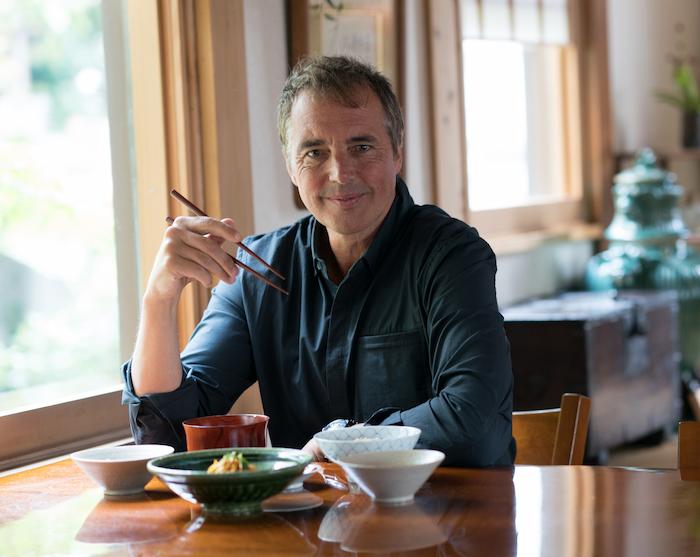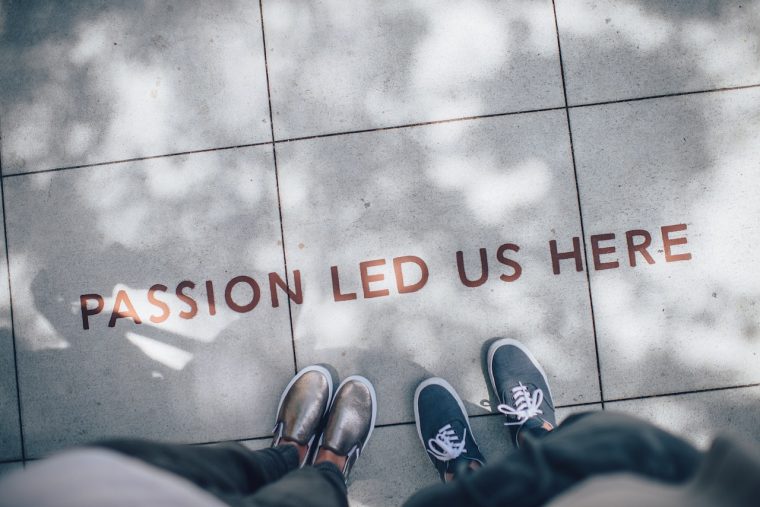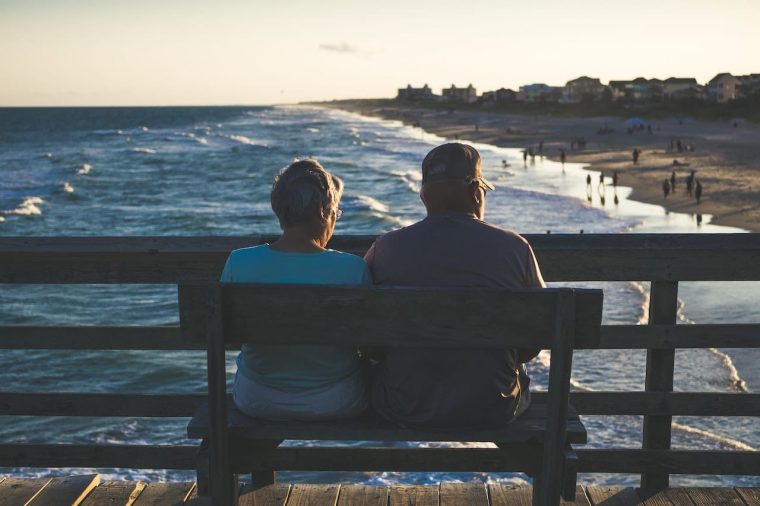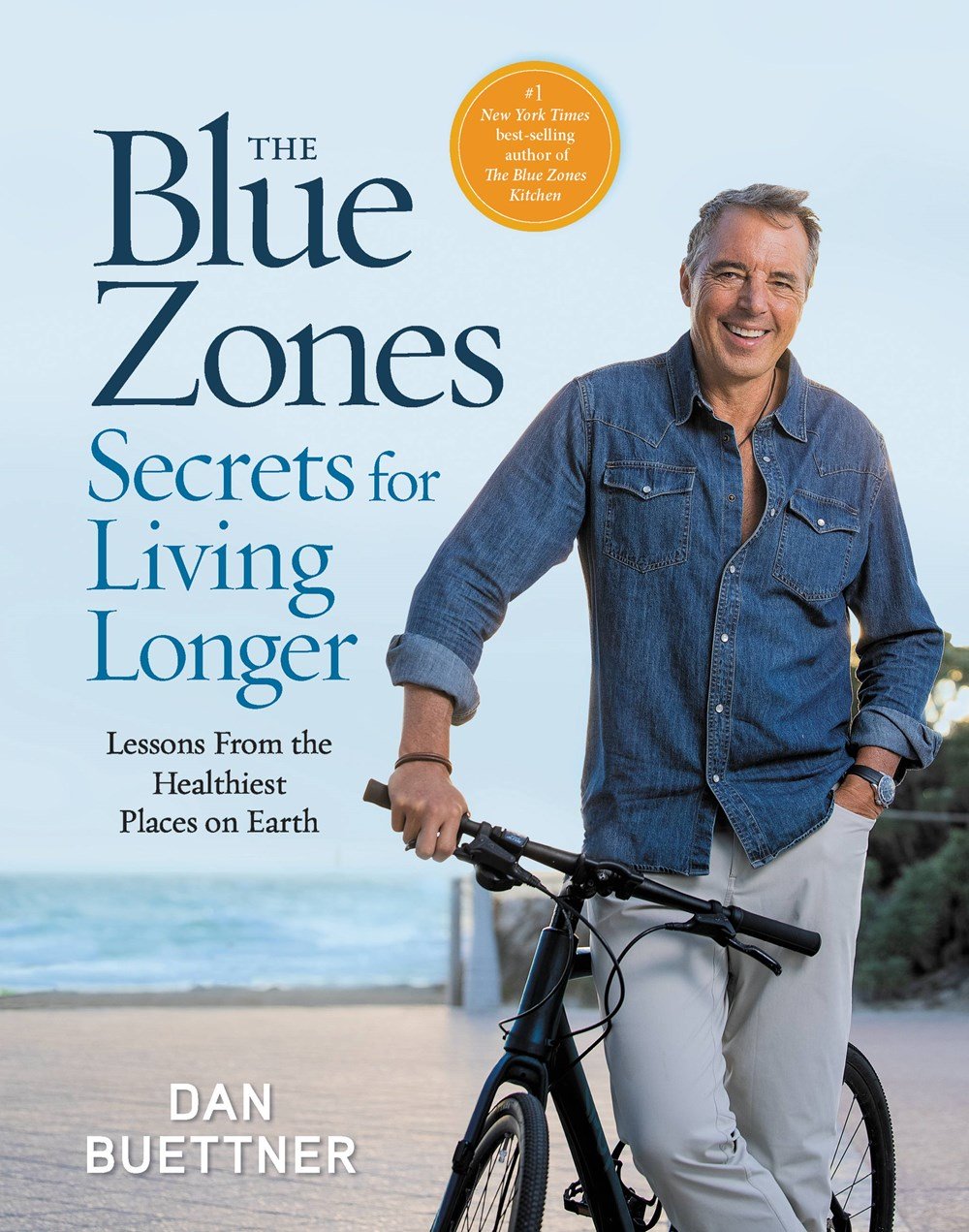It may not seem like it, but this is a newsletter of two extremes. It’s a silent compromise between difficult conversations in one section and gustatory gratifications in the next.
I wouldn’t change a thing, I don’t think—but after writing 13 editions, I’m realizing more fully that this kind of “split mentality” is here to stay. In the grand formula of Eating to 100, both parts matter… but “Eating” tends to be the fun part and “to 100” tends to be the challenging part.
I don’t need to explain why “Eating” is the fun part. I might as well add that, if I had just named this newsletter Eating, it probably would have been easier for me to produce (and easier for you to digest). Then again, it probably wouldn’t have been as compelling for either of us.
If you know anything about my body of work, you know that I am completely sincere about the “to 100” part. I am a man of science; I do not stretch the facts to get attention. Even so, there is no straightforward way of explaining the whole scientific miracle of human longevity. One of the inescapable themes of my work is the complexity of interconnected systems, or (in simpler terms) how living to 100 is made possible by a variety of factors working in harmony.

With each edition, I try to mix and match those bites so you’re getting a blend of light and heavy, delicious and nutritious.
Today’s trickier conversation: how we (should) think of doctors and the medical profession in the broader context of health and wellness.
Today’s gustatory gratification: why we should eat more garlic and onions. This section comes second because it offers an example of the kinds of information your doctor might not think to share (as discussed in the first section).
So, in the best possible spirit, let’s get started with the tougher stuff!

Most of the time, I use the Rooted In Relationships section to explore the importance of our everyday relationships—how the people you might see on a regular basis can help you stay healthier and live longer.
This time, though, I’m taking a slightly different angle. I want to talk a little bit about medical relationships: how medicine relates to other health and wellness professions, and how this might influence your perception of the medical field (all the way down to your relationship with your doctor specifically).
Obligatory disclaimers first: I am NOT a doctor, and this is not medical advice. This is just one person’s observations, presented here as food for thought. And as long as I’m setting expectations…
This is NOT a bashing of doctors, medicine, or the medical profession. Some of my closest friends and colleagues are doctors, and I would literally trust them with my life. The doctors I know are some of the sharpest, wisest, and most well-meaning people I’ve met; they’ve taught me a great deal, and I often pause to consider their point of view.
I use terms like “observations” and “point of view” because my goal here is to offer some perspective on doctors and medicine—in other words, to show how they fit into a larger context so you have a better sense of what they can (and can’t) do for you.
First, let’s zoom all the way out…
Healers have been a venerated class of people since the beginning of time, and it’s worth noting that the line between healer and priest/shaman was often a blurry one; in both cases, we’re talking about people who were believed to have some control over life and death. Nobody else knew how their treatments worked—in many cases, because others were forbidden to know—and some of the healers’ treatments really did work, whether by chance or thanks to science we can understand today.
As Arthur C. Clarke once noted: “Any sufficiently advanced technology is indistinguishable from magic.” In the earliest days of the human species, even the most primitive healing technologies (like the application of plants and herbs) were seen as a kind of magic, especially when they worked. Hence, the fine line between healers and priests.
Fast forward thousands of years, to the period following the Civil War. In America, at least, this is about when medicine got its act together and started to become the highly scientific, highly educated, highly regulated profession we know today. Over the course of the 20th century, we all started forming roughly the same mental image of doctors—an image which includes not just the white coat (and maybe a stethoscope), but also a certain ineffable formality and seriousness.
For generations, a doctor’s word was considered law in matters of health; their instructions were, once again, treated with the same sort of reverence as a priest’s. As before, you didn’t know how the treatments worked; you had no true understanding of the doctor’s thought process. Unlike before, you had a more concrete reason for respecting the doctor’s word—their level of education, basically—and as I’ll explain more a bit later, this remains one of the most compelling reasons to listen to doctors.
But fast forward again, to the present time, and the medical profession’s luster has faded somewhat from its mid-century heights. The main difference is that the general public is far more educated; the baseline understanding of science is greater, and the number of people with college degrees is exponentially higher. We definitely still respect doctors, but their level of education is comparatively less impressive than before; we’re now likelier to see medicine as “a path we didn’t choose” than “the unattainable fount of authority” it once was.
Medicine still produces the occasional miracle, but as a whole, it’s no longer indistinguishable from magic.

If it’s fair to say that the general aim of medicine is to help people live longer, healthier, and happier lives, then we’re forced to observe that TONS of disciplines and professions all have that same overarching goal in mind. What doctors (basically) try to do is also what nutritionists, physical trainers, therapists, chiropractors, and countless other professionals try to do in their daily work.
This is also, by the way, where I enter the picture. I’m not a practitioner of any kind—I think “educator” is the more appropriate classification—but again, I share that same overarching goal of helping people (in this case, you readers!) to live longer, healthier, and happier lives.
Overall, I’m optimistic about the recent preponderance of health and wellness professions. I do think that people should have options (and information) when it comes to their health and wellness, and I’m a fan of any science-based expertise that can reliably help others. I might as well note, too, that most health-and-wellness professions don’t have reason to clash most of the time; in fact, they often inform and assist one another. (Your doctor will probably be thrilled to hear that you have weekly appointments with a therapist and a personal trainer.)
But this leads us to the obvious problem, or at least the biggest source of public confusion: the fact that disciplines do sometimes clash, and we the people often don’t know enough to be sure who we should listen to. In recent decades, even almighty Medicine has begun to show its limits, cracks, and systemic corruptions… and so it’s become more and more normal to wonder whether your doctor is giving better advice than all of their “competitors.”
For today’s purposes, I won’t try to break down all the topics where Western medicine is “right” or “wrong” in its disagreements with other disciplines. I’ll simply apply an old aphorism and suggest that, especially by now, medicine’s greatest strengths are also some of its greatest weaknesses.
Three properties of medicine which serve as examples:
№ 1: Medicine’s Basis in Hard Science
STRENGTH: Doctors tend to stick to what’s been proven to work based on hard scientific evidence, and their knowledge of “what’s been proven to work” gets larger and richer with every passing year. This is why, a lot of times throughout medical history, doctors have been right in ways that now seem like common scientific sense; as one example among millions, hydrogen peroxide is a better wound-cleaning agent than dirt, and by now we’re so sure of it that we (rightly) dismiss anyone who thinks otherwise.
WEAKNESS: Obviously, sticking only to what’s been proven sometimes eliminates (what are theoretically) better treatments for those who might benefit.
But recently, the more problematic outgrowth of medical science is the tendency to over-medicalize things, to interpret them through too narrow of a lens. When we collectively pressure our doctors to find medical solutions to generalized issues, that’s exactly what they end up doing: they name, blame, and tame every malady as though it’s a formal medical condition, whether or not it truly deserves to be.
This is not for lack of science per se; they have mountains of research to back up whatever they try. Yet results for patients are often lackluster, and I think this is especially likely where medicine has missed the forest for the proverbial trees—when they’ve forgotten that they can’t account for everything in the big picture of health and wellness (even if, as doctors, they do know an awful lot).
№ 2: Medicine’s Dominion Over the Body
STRENGTH: Part of the reason medical training takes so long is that you have to learn how the entire body works in detail, how all of its systems interconnect, and how you can manipulate those systems to good effect for a diverse population of patients. Most doctors have this deep body of general scientific knowledge in common no matter their specialties, and then they still specialize—which is to say that doctors (individually and collectively) know how to treat an incredibly diverse collection of health and wellness issues affecting everything from your head all the way down to your toes. Still…
WEAKNESS: It’s surprisingly easy for doctors to mistake the breadth and depth of their knowledge for a sort of “limited omniscience.” In other words: yes, doctors have to understand the whole body, and they have to understand the real science of how things work, and this gives them a baseline level of knowledge that is exceedingly rare in the general public. They can “see” the body and its systems well enough to understand many problems from the inside out…
… but even if they can “see” the whole body, they can still only see it from the single vantage point they’ve built, i.e. the medical knowledge and expertise they’ve accumulated as one person. They will struggle to help with any issues that they can’t see clearly from that vantage point—and so there are certain conditions (like, say, fibromyalgia) that medicine struggles to treat, because none of its specialists yet have a “clear view” of how the problems and possible solutions work.
Also: as much as medical science knows about the body, it knows surprisingly little about the single most important organ in it, namely the brain (though not for lack of trying). But that’s a whole other can of worms.
№ 3: Medicine’s Impulse of Care
STRENGTH: So far as I can tell, from both data and experience, most doctors really do care. In other words, they really do want to help their patients to feel better; they really are trying to muster the best treatment they can for their patients, drawing on whatever knowledge and means they have at their disposal. They are, after all, people before being doctors, and being conscious of this often makes them better doctors; for example, the human element helps to explain good bedside manner in the doctors who have it.
WEAKNESS: Most medicine excels at the active aspects of treatment rather than the passive ones. This is not to say that medicine is purely reactive in nature; after all, doctors love acts of prevention where they’re possible (vaccinations are a good example). This is to say, however, that doctors mostly solve the problems in front of them, and that the usual structures of medical care (rounds for inpatient, appointments for outpatient) are optimized for this kind of treatment.
Unlike a therapist (whom you might see for an hour every week), your doctor doesn’t have much continuous sense of your health; you’re checking in with them maybe twice a year for maybe fifteen minutes each time. They know, of course, that your health and wellness is a lot bigger than medical care—it’s also about diet and exercise, to name two obvious factors—but many doctors speak of lifestyle factors in the briefest and most resigned of ways because they know they’re only seeing you for thirty minutes a year.
Even in the best of cases, you mostly see your doctor as an appointment and your doctor mostly sees you as a chart. I mean that matter-of-factly, not cynically. You really should keep that chart up to date with regular appointments, because it really will help the doctor to help YOU in the long run. Still, if we’re being realistic, that thin of a relationship simply can’t cover everything that you might need to stay healthy and well, and to live your longest.
Given the limited time available to practicing doctors (and given the limits to doctors’ expertise, which are easier to acknowledge nowadays), it’s not reasonable to expect our doctors to talk with us at length about our habits and our relationships and our dietary choices. It’s not their job to share recipes with us, or to give us some open-ended ideas for how to improve our lives in little, non-medical ways.
That’s why there are people like me. ?
So, in parting, a few quick words on how you might think of (your) doctors:
- Among streetwise, modern adults, doctors are no longer The One And Only Authority on all matters of health and wellness. However, they do remain seasoned medical experts, and (truth be told) they don’t need a ton of time with you to help you over the long run, especially if you’re answering all of their questions honestly. In other words: your doctor isn’t omniscient, but they are watching your back in a big and important way.
- Given their extensive scientific expertise alone, it’s never wise to dismiss a doctor’s advice outright unless you have an airtight reason—and the more doctors that independently tell you the same thing, the more you probably need to listen to them. Having said that, it is sometimes valid to seek a second opinion; even medical science has an element of interpretation, after all (especially when it comes to unusual diagnoses).
- Remember that even Medicine learns and adapts with the times—if nothing else, because its practitioners do. You might be surprised by how open-minded some MDs can be about alternative remedies; they’ll be quick to state the limits of their knowledge, but in many cases they’ll also mention an experience that changed their opinion (often some form of “I don’t totally understand how, but it really helped someone I know”).

Today in Pantry Powerhouse, I want to talk about a whole family (well, genus) of wonderful ingredients known for their pungent, eye-watering smells.
Don’t get nervous, y’all. We’re talking about the Allium genus*, which includes the species that we usually call “onions” and “garlic.” If it smells like one of those two, it’s probably related to them; the hundreds of known species of alliums include shallots, scallions (a.k.a. green onions), chives, and numerous other plant ingredients commonly known to chefs.
*A handy mnemonic from biology class: To remember the taxonomy (the levels of classification for plants and animals), just remember the sentence King Philip Came Over From Germany Soaked for Kingdom > Phylum > Class > Order > Family > Genus > Species.
It’s possible that the name allium comes from the Greek ἀλέω (aleo), meaning “to avoid.” No doubt they’d have been referring to the smell, whose popularity (especially among “delicate” palettes) tends to decline the further back in time you go. Recall, for example, that the villainous Mr. Potter of 1947’s It’s a Wonderful Life pejoratively refers to regular people as “garlic eaters.”
But the Greeks and the greedy man both got it wrong. In fact, they got it completely backwards—because there are many reasons not to avoid garlic and its kin. Alliums offer their diners a TON of health benefits, and a lot of those benefits are chemically inseparable from what makes them so fragrant.
First of all, alliums are loaded with nutrients like vitamins B1, B2, B3, B6, C, E, and K, plus minerals like iron, magnesium, sodium, phosphorus, and zinc. And that’s all well and good, but it’s not what makes alliums nutritionally special.
When alliums like fresh garlic are chopped or crushed, it activates an enzyme called alliinase which converts alliin into allicin. This reaction is also (as you might have guessed) what strengthens the smell and causes you to “cry” when you’re chopping onions.
Allicin is, in simple terms, a miracle compound; it has antibacterial, antifungal, antiparasitic, and even antiviral properties. A few specifics:
- Allicin is able to target “bad guys” like E. coli (bacteria) and Candida albicans (fungi) which can otherwise dig in and resist all sorts of drugs.
- Allicin promotes the growth of healthy bacteria in the gut—and the alliums that contain it are often excellent sources of prebiotic fiber as well.
- Alliums are surprisingly good fighters of cancer, particularly gastric and prostate types. They detoxify carcinogens and slow tumor growth; they also contain a rich variety of flavonoid phytochemicals whose anti-inflammatory effects help to protect us from cancer in the first place. (The same flavonoids also appear to be beneficial for fighting off Alzheimer’s and heart disease.)
So if you love the smell of alliums cooking in your kitchen, go ahead and double down on ‘em! They’re even better for you than you thought. ?
Before we go, though, I want to share three allium pro tips from Dr. Will Bulsiewicz’s Fiber Fueled. I don’t usually like the term “hacks” (and I even hesitated to use the term “pro tips”), but for once I think these are unique and compelling enough to count!
- If you want to slow the reaction that causes you to cry when chopping an onion, stick it in the freezer for five minutes and get it cold first.
- Remember, the “miracle compound” allicin is created by a chemical reaction that only starts when you chop or crush your alliums—so to maximize the amount of allicin, you have to allow that reaction to finish. How? You CHOP and then you STOP for ten minutes before cooking.
- Raw garlic can fight the common cold (and this conclusion is supported by a placebo-controlled study)! At the first sign of a sore throat, cut 2-4 cloves of garlic into pill-sized pieces, then wait 10 minutes (for the allicin) and swallow the pieces whole. Do this daily until the cold is gone and it will probably be gone a lot faster!

The Blue Zones American Kitchen is available now! If you haven’t ordered your copy yet, you can do so from any retailer where books are sold. Each week, we’re celebrating some of the incredible chefs who have shared their brilliance with us in this lost American Diet of Longevity.

Tess Villegas-Rumley is the chef and owner of Barefoot Zone in Kona, Hawaii. She’s here to transform lives through food by teaching others to eat healthy—all in the aloha spirit.
What does that mean? Among other things, it means that her dishes are 100% plant-based, and she offers weekly Facebook and Instagram live cooking shows as full of energy as they are good flavors.
She shared her recipes for Hawaiian Fern Salad and Hawaiian Fresh Fruit Tacos with me in The Blue Zones American Kitchen.

My friend Toni from Plant-Based on a Budget has a new cookbook out now called Plant-Based on a Budget: Quick & Easy and it’s a wonderful kitchen staple for anyone with limited time and money who’s trying to eat well. Today she’s sharing one of her upcoming recipes with us that I highly suggest you check out!
Cinnamon Spiced Nuts
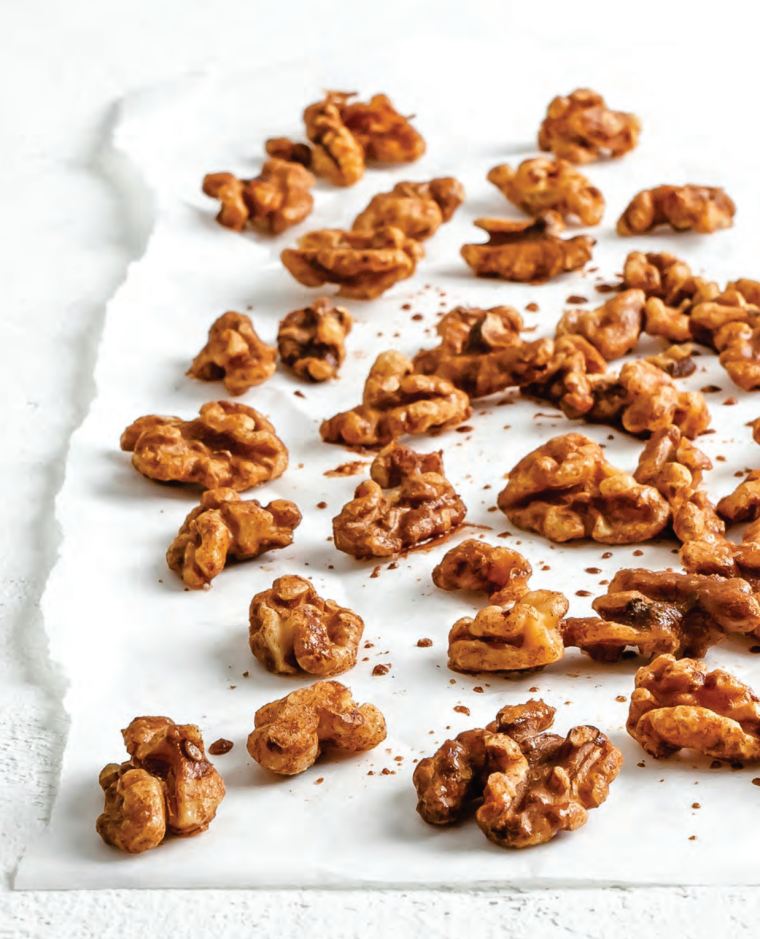
Ingredients
1 1/2 cups your choice raw nuts (pecans, almonds, walnuts, etc.)
1 1/2 tablespoons maple syrup
1 teaspoon ground cinnamon
The Method
Preheat the oven to 300 degrees. Line a rimmed baking sheet with parchment paper or a silicone mat.
In a medium bowl, stir together the nuts, maple syrup, and cinnamon until thoroughly combined.
Spread out the nuts in a single layer on the prepared baking sheet. Bake for 10 minutes, or until lightly browned. Let the nuts cool on the baking sheet.
Store in an airtight container at room temperature for up to 1 month.
